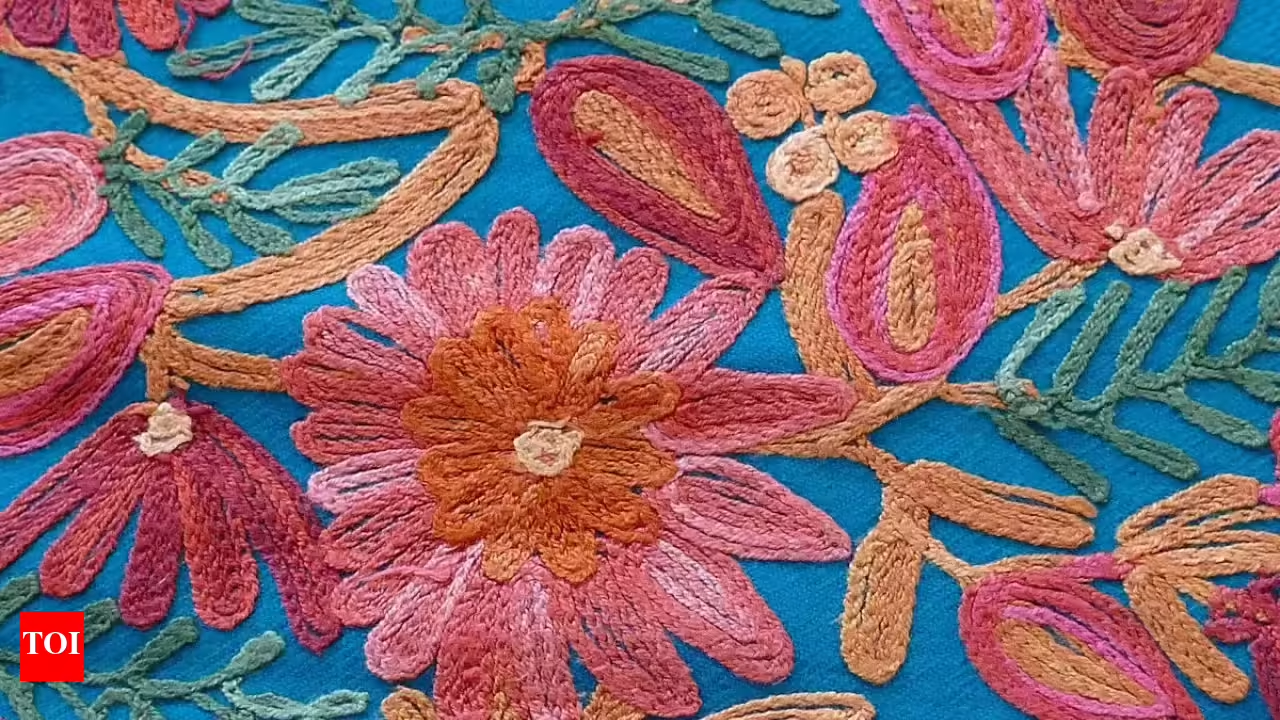
John Hawk Insunrated – Embroidery used to be known as a quiet hobby, something associated with tradition, patience, and delicate beauty. But in recent years, the craft has evolved into something bold, rebellious, and even dangerous. Artists are no longer limiting themselves to simple floral motifs or monogrammed towels. They are stitching provocative messages, weaving political protest into fabric, and using unconventional materials like metal wire, plastic, and even human hair. This explosive transformation has captured the internet’s attention and sparked a global movement. From streetwear designers to protest artists, millions now view embroidery as a powerful medium for expression. The shift from soft art to edgy activism has flipped the old-fashioned reputation of this craft on its head. In every stitch, there is now purpose, attitude, and even confrontation. Embroidery is no longer just beautiful—it is brave.
In the age of social media, traditional skills are being reimagined by a new generation. Embroidery is at the center of this creative storm. Young artists and designers use it not just for decoration but as a tool for storytelling. Instagram, TikTok, and Pinterest have all exploded with viral content showing hoops filled with controversial slogans, feminist symbols, and edgy graphics. These stitched pieces are not hung quietly on walls—they are worn on jackets, framed in galleries, or carried as protest signs. The Real Way to Make Nasi Lemak might stir hunger, but embroidery stirs emotion. This shift is no accident. It is the result of frustration, cultural identity, and a hunger for authenticity in an overly digital world. When people can express rebellion through thread, they do it with pride. For many, this form of art feels more permanent than paint or pixels.
If embroidery once followed strict rules, those rules have now been shredded. Today’s embroidery artists ditch silk threads in favor of barbed wire, shattered glass, recycled trash, and glow-in-the-dark filament. Some incorporate burnt fabric or three-dimensional textures that leap from the frame. This daring shift comes from a desire to shock, provoke, and challenge ideas of what art should be. Even fashion brands are joining the trend by commissioning pieces that use dangerous objects to elevate runway shows. A few creators embroider onto unconventional canvases like denim jackets, torn flags, or leather boots. Every stitch becomes an act of defiance, forcing viewers to rethink both the material and the message. This isn’t embroidery for comfort—it is embroidery with an edge. Through experimentation and risk, artists redefine what is possible in needlecraft and open doors for boundary-pushing innovation.
“Read more: London’s Inanimate Show Explores AI Desire, And It’s Unsettlingly Real”
All over the world, embroidery has found a home in activism. In countries where voices are often silenced, artists use thread as a form of resistance. Hand-stitched banners demanding justice have appeared in protests. Women have created collective embroidery projects to share stories of trauma and survival. These projects foster community, raise awareness, and speak volumes without shouting. Even when digital censorship rises, thread remains unfiltered. The message is stitched by hand, not written in pixels that can be deleted. Embroidery now travels across borders, weaving global solidarity into every pattern. In refugee camps, prisons, and underserved communities, people pick up the needle not just to heal but to speak. The act of stitching gives control, rhythm, and space to be heard. This resurgence has proven that creativity is not only therapeutic—it is political. Art becomes a language when voices are denied.
The excitement surrounding embroidery shows no signs of slowing down. As technology advances, so does the technique. Some artists now use digital embroidery machines to layer detailed textures quickly. Others program robotic arms to replicate traditional techniques at impossible speed. Yet the human touch remains irreplaceable. Handmade imperfections give embroidery its soul. Courses in contemporary embroidery are filling up fast, with young creatives hungry to learn the craft. Schools and museums are introducing textile art into modern exhibitions. Brands collaborate with embroidery artists to make statement pieces that blend culture and commerce. Even mental health therapists are recommending embroidery as a form of mindfulness. In a world of noise and speed, the simple act of stitching brings calm and focus. Whether edgy or elegant, bold or quiet, embroidery continues to evolve as a vital form of expression. What started as domestic art is now a global force.
John Hawk Insunrated - Many people now discover that learning skills through hobbies memberi dampak besar bagi kepercayaan diri, kreativitas,…
John Hawk Insunrated - Budget-conscious coffee lovers now have more options than ever, and this comprehensive home coffee makers review…
John Hawk Insunrated - Travel enthusiasts and professionals increasingly recognize that travel boosts creative thinking by exposing the mind to…
John Hawk Insunrated - creativity outside comfort zones often rises when people face novelty, moderate pressure, and meaningful constraints that…
John Hawk Insunrated - Many creators now adopt the anti perfection content workflow to publish quickly, learn fast, and grow…
John Hawk Insunrated - Many creators now adopt an anti perfectionist workflow guide to publish faster, learn from real feedback,…